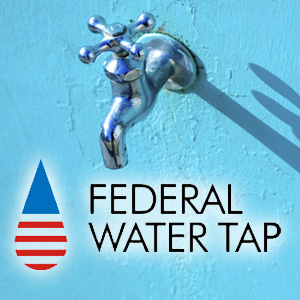Federal Water Tap, December 28: U.S. Needs More Water Data
The Rundown
Water managers need more information. Streams in the Upper Colorado River Basin are fed in large part by groundwater. Congress passes a microbead ban. Growth in India’s farm sector was driven by increased groundwater irrigation.
“At the level at which one makes management decisions, I would say that we are still data limited.” — Jerad Bales, chief scientist for water at the U.S. Geological Survey, speaking with Circle of Blue about the nation’s water data needs. The USGS is leading development of the National Water Census, a compilation of water use and availability. The agency is beginning with three studies of three basins: the Apalachicola-Chattahoochee-Flint, Colorado, and Delaware. The Colorado study focuses on the connection between groundwater and streams, evapotranspiration, snowpack, and water use.
By the Numbers
48 percent: Amount of streamflow, on average, in the Upper Colorado River Basin that comes from groundwater. Some streams get as little as 12 percent of their flow from groundwater; others, as much as 92 percent. (U.S. Geological Survey)
$US 77 million: Investment in stormwater infrastructure that Puerto Rico agencies will make to prevent sewage and pollutants in San Juan from flowing into nearby water bodies. (U.S. Department of Justice)
$US 3.6 million: Funding in the recent budget deal for the national groundwater monitoring network in 2016, an increase of $US 1 million.
Studies and Reports
India Farm Growth
An expansion of groundwater irrigation in India boosted farm productivity since 1980 more than the extension of canal networks, according to a U.S. Department of Agriculture report. Groundwater wells are more democratic, the report found. They gave more people access to irrigation water, which in turn allowed them to grow crops on the land twice per year. India uses more groundwater than any country, more than twice what China, the number two country, does.
News Briefs
Congress Agrees (Agrees!): No More Small Plastic Beads
First the House, now the Senate. Both chambers of Congress passed legislation to ban the manufacture or use of small bits of plastic in soaps, shampoos, and toothpastes. Microbeads, not removed by wastewater treatment plants, end up waterbodies where they are eaten by fish. The president is expected to sign the Microbead-Free Waters Act of 2015.
On the Radar
Water for New Mexico Pueblos
The Bureau of Reclamation has identified the five options it will analyze in an environmental review of a proposed regional water system for pueblos in northern New Mexico. The Pojoaque Basin water system will draw water either directly from the Rio Grande or from wells located next to the river. A draft review will be published in the winter of 2016.
Federal Water Tap is a weekly digest spotting trends in U.S. government water policy. To get more water news, follow Circle of Blue on Twitter and sign up for our newsletter.
Brett writes about agriculture, energy, infrastructure, and the politics and economics of water in the United States. He also writes the Federal Water Tap, Circle of Blue’s weekly digest of U.S. government water news. He is the winner of two Society of Environmental Journalists reporting awards, one of the top honors in American environmental journalism: first place for explanatory reporting for a series on septic system pollution in the United States(2016) and third place for beat reporting in a small market (2014). He received the Sierra Club’s Distinguished Service Award in 2018. Brett lives in Seattle, where he hikes the mountains and bakes pies. Contact Brett Walton






Leave a Reply
Want to join the discussion?Feel free to contribute!